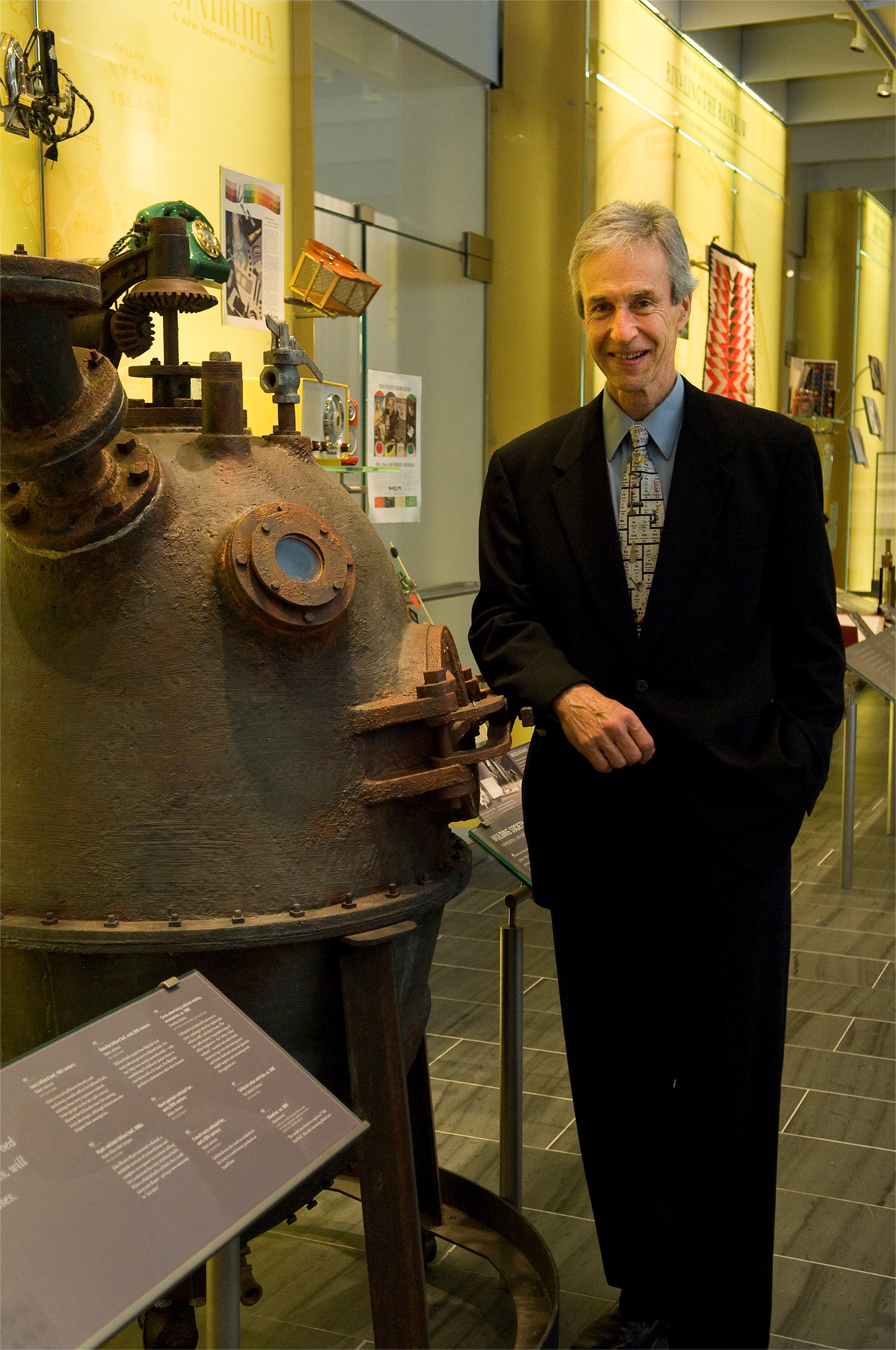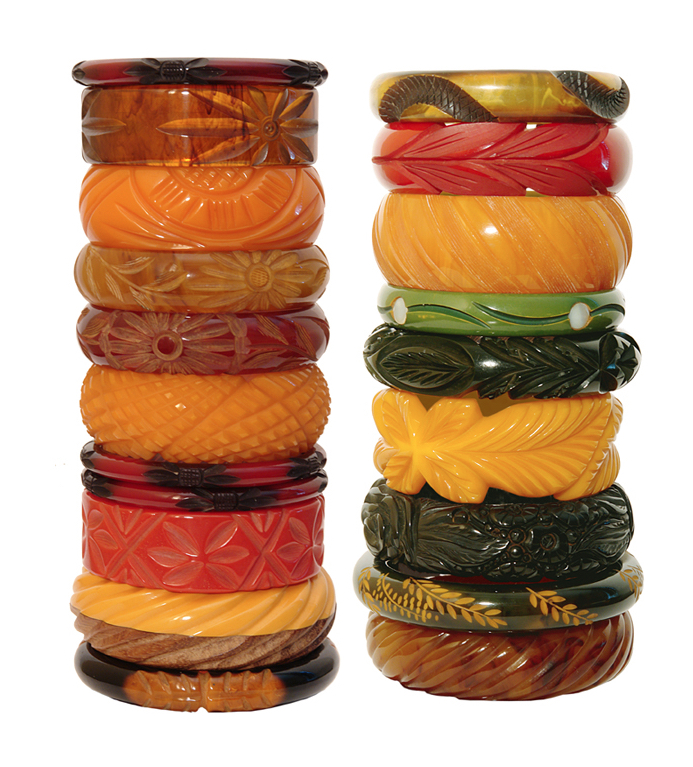
Hugh Karraker and a replica of Leo Baekeland’s Bakelizer at the Chemical Heritage Foundation exhibition hall in Philadelphia.
Redding, Conn., resident Hugh Karraker, is a great-grandson of Belgian-American inventor Leo Baekeland, who more than 100 years ago invented Bakelite, the grandfather of all synthetic plastics. Bakelite has inspired designers for almost at least as long in a sometimes fitful marriage of science and art. Karraker feels perhaps a familial responsibility to pay homage to this foundational process in which phenol (carbolic acid, a byproduct of coal) and formaldehyde are “fired” under heat and pressure (in a contraption the inventor called the Bakelizer) to produce a durable but malleable resin. He has done so by teaming up with filmmaker John Maher, formerly of Redding, to make All Things Bakelite, a documentary movie that tells Baekeland’s pioneering story.
How did the idea to make a documentary about your great-grandfather come about?
I had originally started it in Belgium in 2007, Leo Baekeland’s native country, but the Belgian production company couldn’t come up with the funds. They had a script, a director lined up, but nothing came of that. At the same time I hooked up with Dutch Bakelite collector Reindert Groot, and brought 300 Bakelite items from his vast collection to the United States for exhibitions at the Mark Twain Library [in Redding], the Castle Museum in Saginaw, Mich., and the Hudson River Museum in Yonkers, N.Y. In 2010, Reindert began developing a documentary with the working title Transatlantic Chemistry: Baekeland, the Inventor of Bakelite. Instead of joining his project, I started working with John Maher and we immediately came up with the title All Things Bakelite.
What do you know about Leo Baekeland’s “tenacity” and “eccentricity”?
As described in the movie, he was not a sheep. He didn’t follow the norms. In fact, as a university student he joined a club of liberal thinkers at odds with Catholic Belgium. Right off the bat he was a very independent thinker. As far as being a chemist goes, he took the process of optimally combining phenol and formaldehyde beyond where others in Europe and Great Britain were working. Their failed efforts came up with stuff they called “frozen beer.”

According to Lori Verderame, PhD, noted antiques appraiser, one of the collectibles to watch in 2016 will be Bakelite jewelry.
Speaking of chemistry, how well did you work with John Maher to make the film?
When John and I met, he quickly came up with some ideas for how to tell the story, and I was impressed. I also felt that because Baekeland took his own route to find something successful, I thought I should model my actions on him. So I decided to drive with someone who had a more adventurous approach to the story. I had just seen John’s film, Throw It Down, that captured the intensity of a drum corps and the whole gestalt of a marching band. John has pretty deep emotional and psychological observations of what it takes to succeed.
Some accounts of Leo Baekeland imply that he was “in the right place at the right time.” True?
He grew up poor and wanted to make it rich in America. Also, he loved working in the laboratory. He loved the whole scientific process of testing and failing — the tiny successes along the way. The movie is very strong on that aspect. A lot of educators have seen the film and want to show it to business and entrepreneurial people, students of business as well as science, because it shows what it takes to achieve something.
There’s a line in the trailer for the film that describes your great-grandfather’s invention as a “Pandora’s Box.”
It wasn’t revealed to Baekeland early on as a double-edged sword. He just saw his invention as the material that could be used to make automobile parts, electrical components and meet other industrial manufacturing needs at that time. After that, plastic sort of got a bad name. Remember the famous scene from the 1967 film The Graduate where young Ben is urged to steer his career to plastics? We have that in the movie. We also have an interview with an IBM researcher who says there is hope for the future — more recyclable and toxin-free plastic.
Lori Verderame, PhD, a noted antiques appraiser, has said that one of the collectibles to watch in 2016 will be Bakelite jewelry. I wonder if your great-grandfather gave any thought to this intersection of art and science?
We recently learned that one of his main chemists, Lawrence Byck, started a jewelry-making company within the Bakelite Corporation around 1916–19, designing and making Bakelite beads, bracelets.
How do you tell if any item is authentic Bakelite?
Run it under warm water or rub it vigorously, and if it smells like formaldehyde, it’s Bakelite.
—W.A. Demers
(See the trailer for All Things Bakelite at www.allthingsbakelite.com.)




